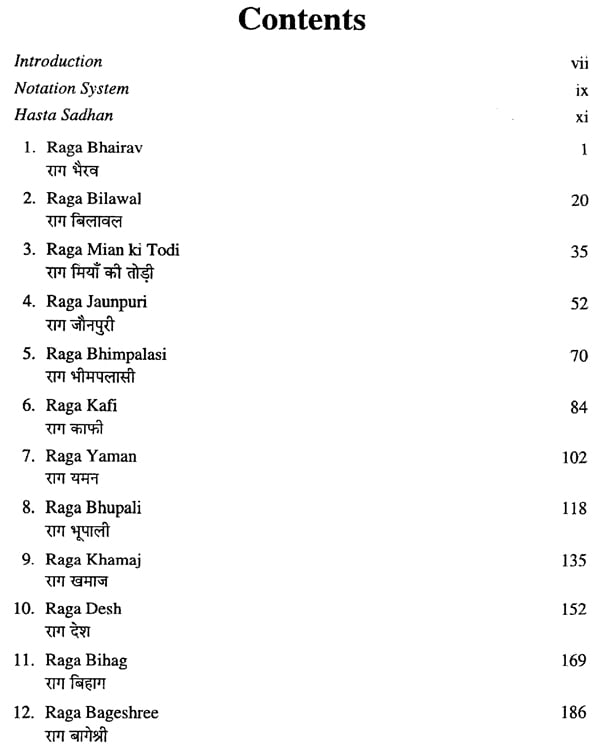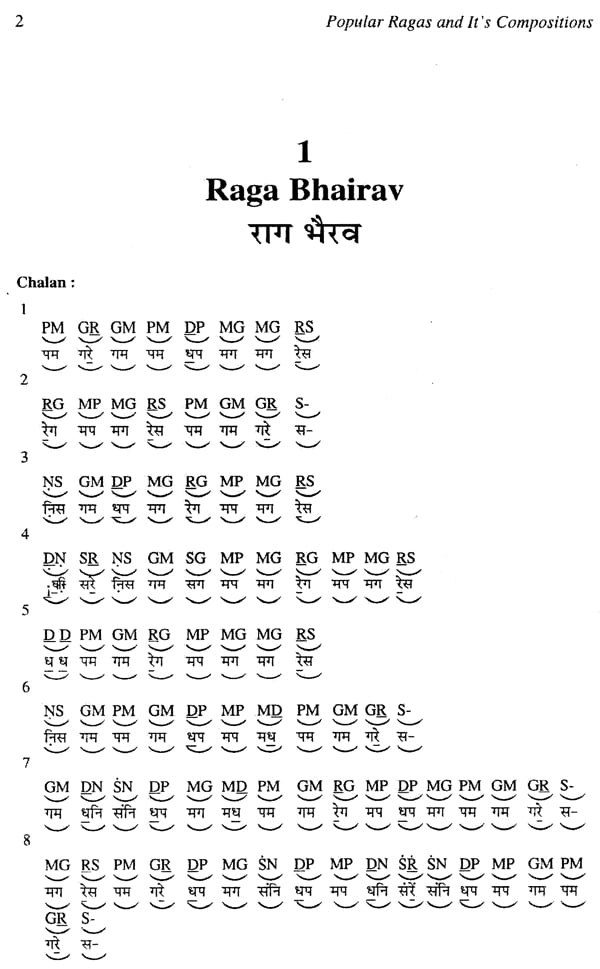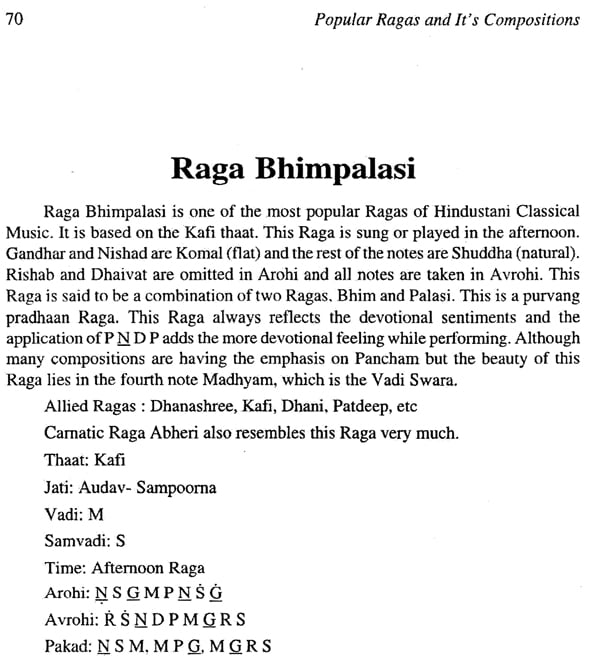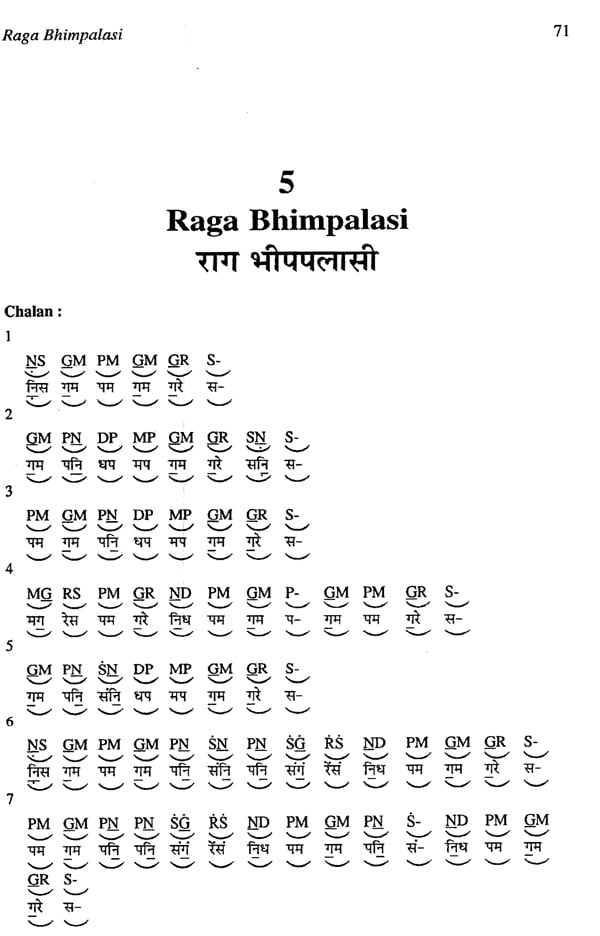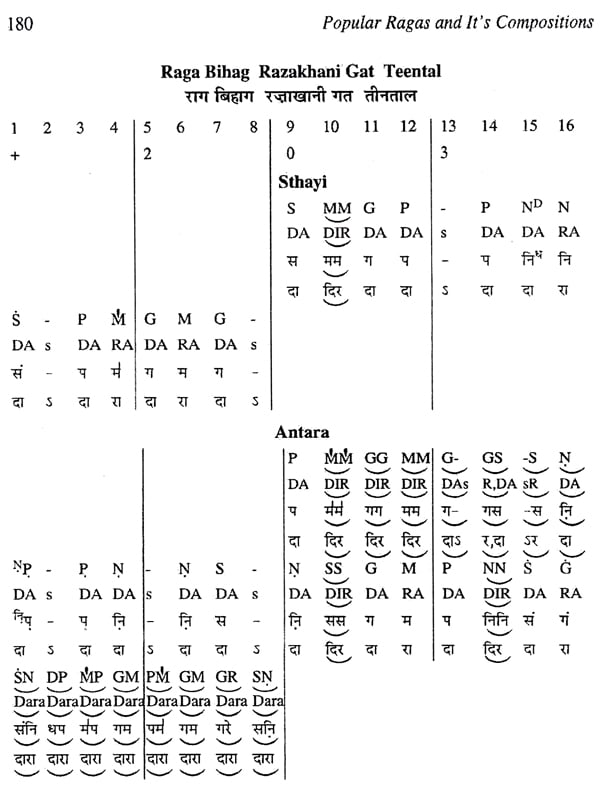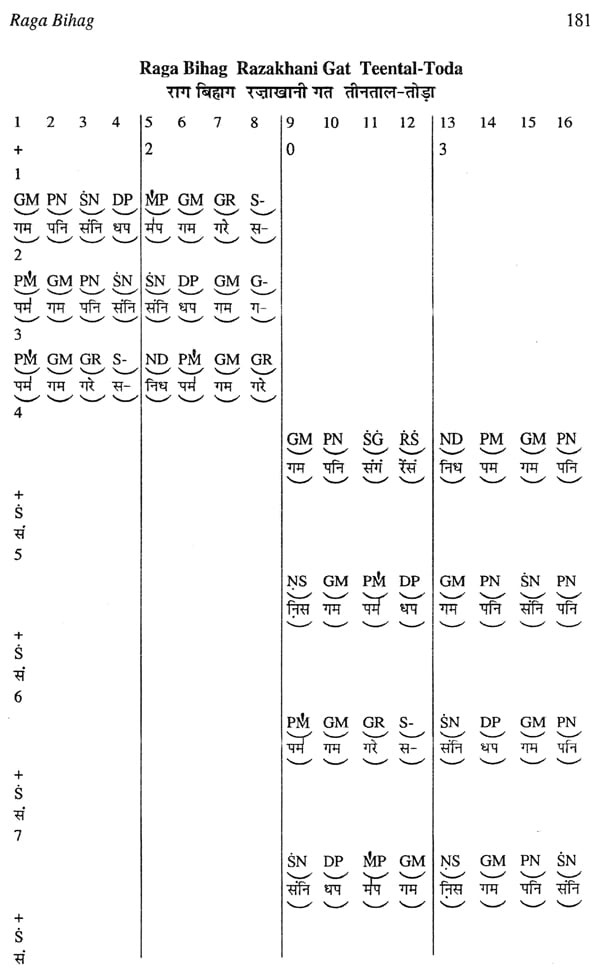
Popular Ragas and it's Compositions in Hindustani Instrumental Music
Book Specification
| Item Code: | NAU582 |
| Author: | Dr. Prateek Chaudhuri |
| Publisher: | Sanjay Prakashan |
| Language: | English |
| Edition: | 2017 |
| ISBN: | 9788174533029 |
| Pages: | 210 |
| Cover: | HARDCOVER |
| Other Details | 10.00 X 7.50 inch |
| Weight | 630 gm |
Book Description
Indian Classical Music, also known as Hindustani Classical Music has two branches, Vocal and Instrumental Music. Instrumental Music has gained in popularity over the years in India and Abroad. There are many students across the world, who have learnt and are also learning this art, the numbers of whom are growing day by day. Indian Classical Music is based on a Raga system. A Raga is a melodic structure, which has got certain rules, but also the freedom to create remaining within the framework of the rules. It is the bane of Indian Classical Music. I have made an attempt to document in a concise way, the manner in which a Raga is taught to any student of music, along with it's delineation in a sequential manner. The book begins with the documentation of the Theory and Chalan of the particular Raga, which is then followed by the Alap. The Alap is also a concise one and not detailed, as the domain of Indian Classical Music is very large and it cannot be written all together. The Alap given in this book gives the reader only an idea of treatment of the notes of the Raga in various saptaks. It is then followed by the traditional Maseetkhani Gat (slow composition) along with it's Sthayi, Manjh and the Antara. The Tanas of this particular Gat are given thereafter. This is followed by the traditional Razakhani Gat in the same raga, which is supplemented with it's Tanas. The Tanas of Razakhani Gat are followed by the traditional Jhala in the same Raga at the end, which is a characteristic feature of Hindustani Classical Instrumental Music. Thus an effort has been made to give a sketch of a Raga as is taught and presented, in a sequential manner. Sine I belong to the Jaipur Senia Gharana, I have also mentioned the difference in the treatment of the Raga, as regards this style and also in the Bhaktkhande system, especially with regard to the application of the notes in Arohi and Avrohi and have concentrated on the Jaipur Senia style of the treatment of the ragas in this book. The sequence of Ragas, as given in this book is based on the time theory system, as is prevalant in our Hindustani Classical Music. Basic and popular Ragas of Hindustani Classical Music have been taken so that any beginner, in addition, can also learn in the same way as we have learnt. I hope this book will be a valuable guide for any student of instrumental music for learning these popular Ragas of Hindustani Classical Music. This is just a small effort on my part to fill up the void of such kind of books available on Hindustani Instrumental Music, which highlight a full Raga presentation though, as a glimpse only, as Indian Classical Music is so vast and one cannot fathom it's depth.
Dr. Prateek Chaudhuri is the son and disciple of the Internationally Renowned Sitar Maestro Pandit Debu Chaudhuri (Padmabhushan Awardee). He is himself also a Sitarist of repute of the country and is graded as an "A Class" artist of India. Dr. Chaudhuri has undergone his training from his father and also under the Great Doyen of Sitar of yester years, Sitar Sudhakar Ustad Mushtaq Ali Khan Sahab. He belongs to the Jaipur Senia Gharana of the famous Senia Gharana, which traces it's name from Mian Tansen, the Doyen of Indian Classical Music. The Gharana traces has an uninterrupted lineage of Sitar players, playing the Sitar, which has got only 17 frets instead of 19, 20 or 21, which can be seen now. Dr. Chaudhuri represents the 9th generation of Sitar players from Maseet Sen (either from Guru to Shishya or father to son), who have all played the 17 fretted Sitar and is still continuing the same tradition till date. The author has extensively travelled all across the country and the world giving lecture demonstrations and concerts. He has also been the featured artist in most of the Major Festivals of the country. He has also been honoured by many organizations of the country in recognition of his invaluable contribution to the world of music. The awards include the Jadubhatta Award from Kolkata, Pandit Nikhil Bannerjee Award from Lucknow, The Best Instrumentalist from Delhi and the Surmani Award from Mumbai, in addition to several other honours and accolades received over the years. The author has also been featured in the prestigious National Programmes of Music of the All India Radio and Doordarshan and also has done several creative performing arts projects with other artists of India and Abroad. At present, he is not only a performing artist of repute of the country but, also a Reader in the Faculty of Music, University of Delhi .
Indian Culture has always fascinated the world due to it's richness. Indian Classical Music forms an important part of our culture. There are two systems widely and historically known in Indian Classical Music. The North Indian and the South Indian. The North Indian system of music is called Hindustani and the South Indian system is called Carnatic. Herein, when we say, Indian. Classical Music, it denotes the Hindustani style. For the South Indian style we refer to the same as Carnatic Classical Music. The music systems are further divided to Vocal and Instrumental Music. Hindustani Music has become very popular not only in India but all over the world.
Our Indian Classical system, i.e.. Hindustani Classical Music is based on a Raga. A Raga is nothing but a melodic structure, where one has to follow certain rules , but the freedom has been given to the artist to create remaining within the framework of the rules. Hindustani Instrumental Music has always caught the fascination of the common man and over the years it has spread it's wings all across the world. Instrumental Music has always been popular all across the world. In this book we will concentrate on Hindustani Instrumental Music. This book is written for the benefit of the students of Hindustani Instrumental music, especially Sitar. There is a sequential system of progression generally followed in principal traditionally, in Hindustani Instrumental Music which is taught to any student of music. The system of delineation of a Raga has got a sequential progression. Hindustani Classical Music is based on a Gharana system. Gharana refers to a particular school of music, which has it's own specialty and thoughts regarding the treatment of a Raga, with respect to application of notes (swat), it's presentation and other aspects related to the same remaining within the framework of the Raga system. There are many Gharanas of music found in Indian Classical Music. As I belong to the Jaipur Senia Gharana, I have tried to give a sketch of the traditional system generally taught and followed in this Gharana with regard to the treatment of the Raga, it's compositions and it's presentation as a whole.
**Contents and Sample Pages**
